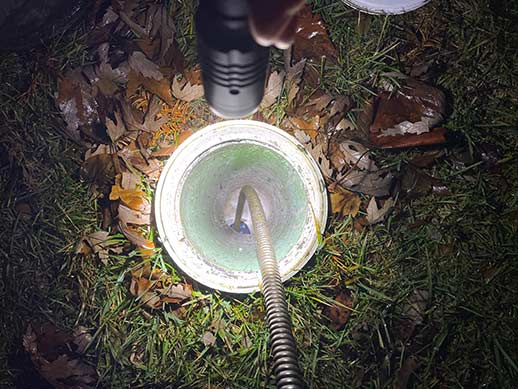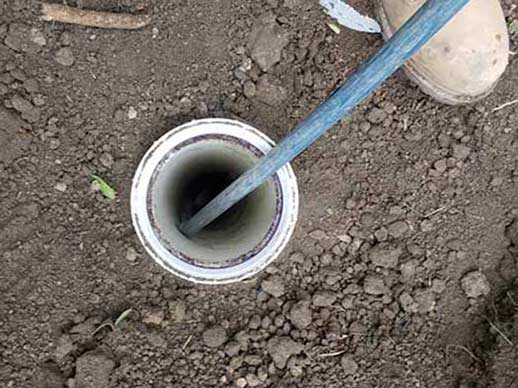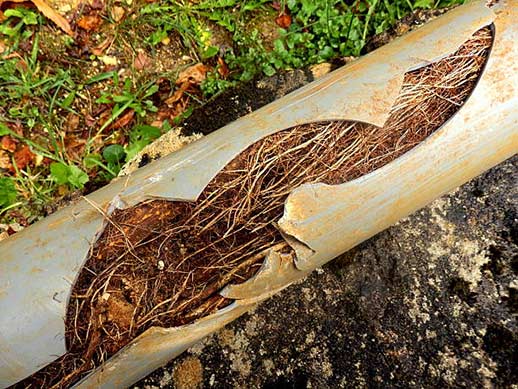Understanding Tree Roots in Sewer Lines
Dealing with tree roots growing in your sewer line can be a frustrating and costly problem. If you’ve noticed slow drains, recurring clogs, or strange gurgling noises coming from your plumbing, there’s a good chance that tree roots are to blame. In this article, we will explore the causes of roots in sewer lines and provide some helpful tips on how to address this issue.
Why Do Tree Roots Grow in Sewer Lines?
Tree roots are naturally drawn to sources of water, and your sewer line can provide a plentiful water supply for them. Sewer lines contain moisture, nutrients, and oxygen that roots find attractive. Additionally, sewer lines often have small cracks or joints that release moisture, acting as an invitation for roots. Once roots find their way into your sewer line, they can quickly grow and cause significant damage.
The Signs of Tree Roots in Your Sewer Line
It’s important to recognize the signs of roots in your sewer line early on to avoid more extensive damage and costly repairs. Here are some common warning signs to look out for:
- Slow draining sinks, tubs, or toilets
- Recurring clogs that are difficult to clear
- Unusual gurgling noises coming from your drains
- Odors coming from your plumbing system
- Sewage backups into your home
If you notice any of these signs, it’s crucial to take action promptly to prevent further damage.

How to Deal with Tree Roots in Your Sewer Line
When it comes to handling roots in your sewer line, there are several options available. The best solution for you will depend on the severity of the problem, the location of the roots, and your budget. Here are some common approaches:
Sewer Rodding
One way to clear tree roots from your sewer line is through a mechanical drain cleaning process known as a sewer rodding service. This method involves using special tools, such as root saws or augers, to physically cut or break up the roots. While mechanical removal can provide immediate relief, it is typically a temporary solution, as the roots may grow back over time.
Chemical Treatments
Chemical treatments involve using herbicides or foaming agents to kill the tree roots in your sewer line. These products are typically poured directly into the affected drains, where they travel through the pipes, killing the roots upon contact. Chemical treatments can be effective but may take some time to fully eliminate the roots.
Hydro Jetting
Hydro jetting is a more aggressive approach to clearing tree roots from your sewer line. This method uses a high-pressure water jet to blast away the roots and any other debris that may be causing a blockage. Hydro jetting is effective at removing even stubborn roots, but it should only be performed by a professional to prevent damage to your sewer line.
Sewer Line Replacement
If the tree roots have caused significant damage to your sewer line, sewer line replacement may be necessary. This involves removing the affected section of the sewer pipe and installing a new one. While pipe replacement can be costly and time-consuming, it is often the most permanent solution for tree root intrusion.

Preventive Measures to Avoid Tree Root Problems
While it may not be possible to completely eliminate the risk of tree roots in your sewer line, there are steps you can take to minimize the likelihood of encountering this issue:
- Consider planting trees away from your sewer line or opting for species with less aggressive root systems.
- Avoid planting trees or large shrubs near your sewer lateral or drainage field.
- Regularly inspect your sewer line for any signs of tree root intrusion.
- Use root-killing treatments as a preventive measure, especially if you have a history of tree root problems.
- Install a physical barrier, such as root barriers or underground shields, to prevent roots from reaching your sewer line.
To Wrap it Up
Dealing with roots growing in your sewer line can be a challenging issue, but with prompt action and appropriate preventive measures, you can mitigate the damage and prevent future occurrences. Whether you choose sewer line rodding, chemical treatments, hydro jetting, or pipe replacement, it’s essential to speak with a professional to determine the best solution for your specific situation.
By taking preventive measures, such as careful tree placement and regular inspections, you can significantly reduce the risk of root intrusion and avoid the hassle and expense of repairs.


